Wrapping up an exciting stage 1!
Earlier this month, Sri Hardeep Singh Puri, Minister of Housing and Urban Affairs, Government of India, announced the 46 top runner cities of the Transport4All Challenge Stage 1—the cities which now qualify for Stage 2.
Also unveiled: ‘Analysis of Public Transport Needs in India’, an in-depth publication about Stage 1, the survey analysis, and the problem statements.

Sri Hardeep Singh Puri, Minister of Housing and Urban Affairs, Government of India,
unveiling the publication ‘Analysis of Public Transport Needs in India’
Driven by the vision to improve public transport for all users—everyday passengers; bus drivers and conductors; auto, rickshaws, and other informal mode drivers—through the power of tech and digital innovation, here’s what we collectively achieved in Stage 1 of the Challenge.
1. Over 130 cities and 200 NGO partners signed up for the Challenge
Launched in April’21 by the Smart Cities Mission of the Ministry of Housing and Urban Affairs (MoHUA), the Challenge invited cities from all over India to participate—to understand the problems plaguing public transport, work with startups and citizens to create and test solutions, and then scale them up across the city.
130 cities from across India signed up for the Challenge.
Transport4All, as the name suggests, is about creating better public transport for everyone, be it the passengers or the service providers. At the core of the Challenge are people, and to ensure their representation and participation, the Challenge invited NGOs to join hands with cities.
Over 200 civil society organisations, research organisations, and educational institutes came forth and signed up to support their cities—making it one of the largest collective working towards reforming public transport.
2. 100 cities created ‘Transport4All task forces’
For a seamless experience, public transport systems need to function as a single system. That, however, is not the case in India. This is because in a city—
- Different government agencies are responsible for different infrastructure for a bus system. For example, in Chennai, the bus fleet is operated and maintained by the State Transport Undertaking-MTC, whereas bus stops are created and maintained by the road-owning agency—either the Greater Chennai Corporation or the Highways department, depending on the road.
- Each public transport mode—the public bus, the metro, the suburban rail—is owned and operated by independent bodies.
- Development authority governs the nature and extent of buildings in different parts of the city, which affect the usability of public transport modes.
- Traffic police oversee matters such as vehicle rerouting, dedicated bus lanes, and parking which directly affect how buses and shared modes service passengers.
Now, imagine if all of these agencies come together under one roof.
That would change how decisions are made and projects are implemented. Through a single Unified Metropolitan Transport Authority (UMTAs) like this, creating transport systems becomes more integrated, coordinated, collaborative, and most importantly, faster.
Transport4All Challenge made that happen.
100 cities created ‘Transport4All Task Forces’—like mini-Unified Metropolitan Transport Authorities, that brought together all stakeholders and departments responsible for public transport in the city into one big collective. These are the Municipal Corporation, Smart City Special Purpose Vehicles (SPVs), City Bus Undertaking, Metro and Suburban Rail, Regional Transport Office, Traffic Police, and Road Owning Agencies.
To represent Informal Public Transport (IPT) and citizen voices, IPT unions and NGOs too were included. Technical experts and academic institutes working in the field of sustainable mobility were also part of the Task Force, to provide expertise and guidance.
The ‘Transport4All Task Force’ from Aurangabad City
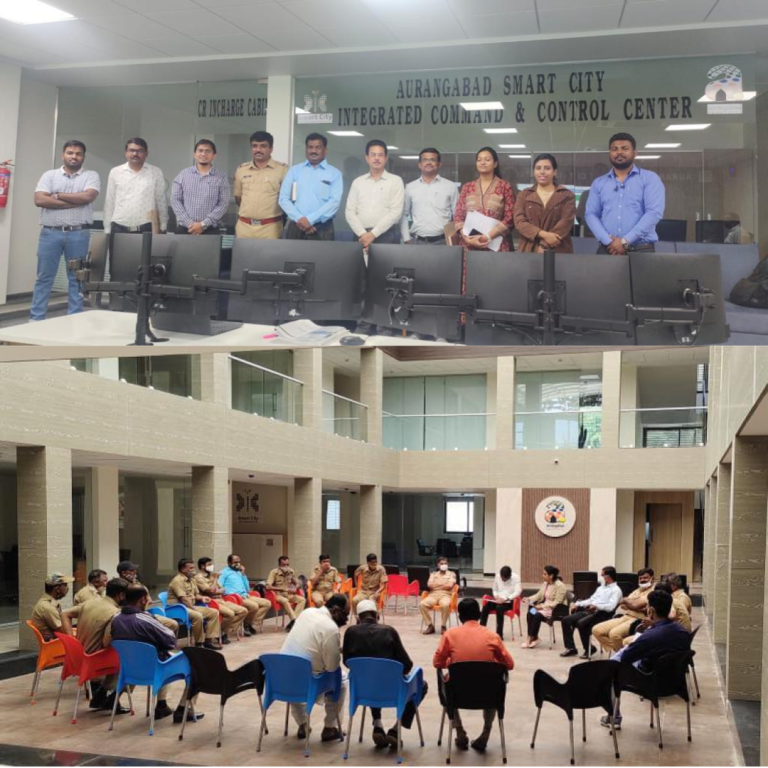
3. 46 cities surveyed 2 lakh citizens, 17K bus drivers and conductors, and 22K IPT drivers
Before cities designed solutions, they needed to pin down the problems that people—both passengers as well as drivers and conductors—faced. In what was one of India’s largest public transport data exercises, 46 cities—out of 130 cities—engaged with these stakeholders by asking them about their everyday issues with buses and shared modes like autos, vans, and rickshaws.
Survey volunteers went to neighbourhoods in different parts of the city and spoke with citizens of varied gender, age, and incomes; chatted with commuters near bus stops and recorded their concerns and suggestions; sat with groups of shared mode drivers and held focussed discussions. Responses were then fed into an automated data analysis system, to draw insights and inferences.
For the first time, cities had data—local, specific, disaggregated—to guide and direct them to the problems that needed fixing.
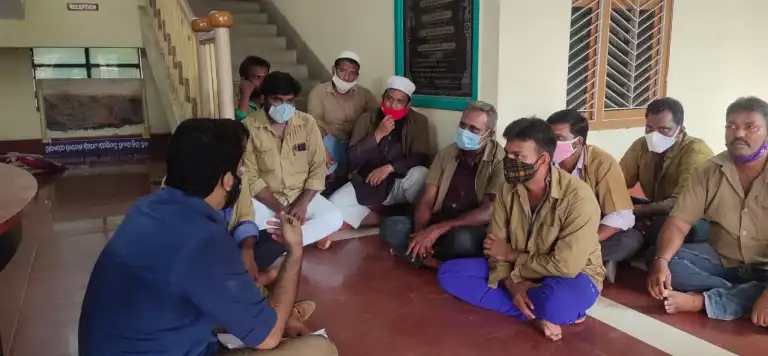
In conversation with IPT drivers in Guntur, Andhra Pradesh
4. 46 cities submitted 165 problem statements
Public transport data—that was previously assumed, misunderstood, or simply unavailable—now had strong evidence. The survey questionnaires covered several topics on public transport—safety, convenience, services, fare payment, passenger information, as well as fleet maintenance, scheduling, permits—and the emerging data stories revealed the issues that needed attention and intervention.
Through a guided framework, cities were able to translate these specific issues into problem statements, and what needs to be done to address them.
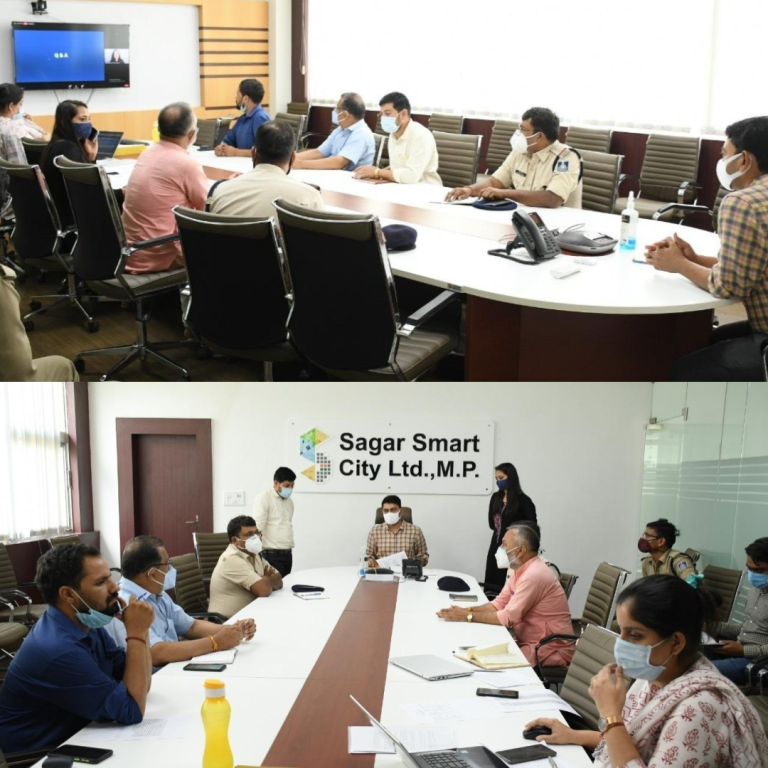
Cities discussed the survey data with the Transport4All Task Force to draft the problem statements
Of the several problem statements, each city had to prioritize the top five, in consultation with their Task Force. After a rigorous 8-month-long process of data collection, scrutiny, and analysis, 46 cities successfully submitted 165 problem statements and qualified for Stage 2 of the Transport4All Change.
Our heartiest congratulations to the 46 Champion Cities!
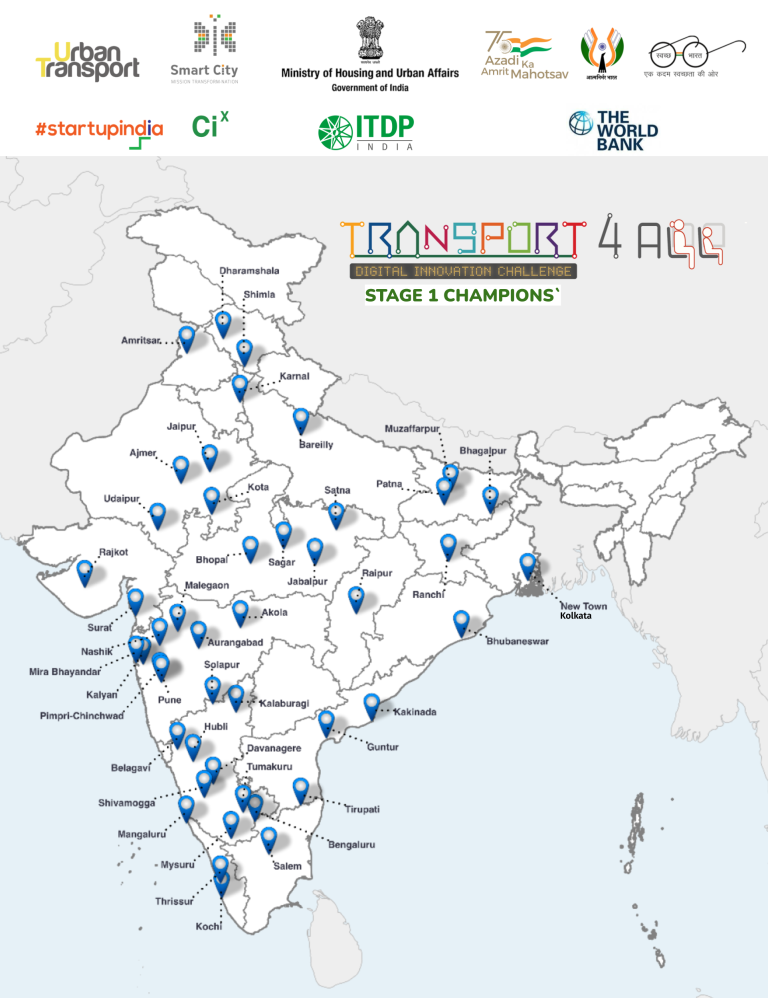
5. 10 problem statements curated, will now lead to digital solutions
The Transport4All Challenge team studied each of the 165 problem statements and recognised how multiple problem statements fed into one or more of the five solution areas, such as:
- Service monitoring and planning
- Passenger information & interaction
- Fare products and payment
- Financing, procurement, and regulation
- Prioritisation of bus transportFinally, the team curated 10 problem statements that need tech-based solutions,( and an additional 4 that require non-technology solutions)—to tackle the 165 problem statements submitted by the cities.
Curious to know more about the survey insights and problem statements? Head to transport4all.in and read our in-depth publication:
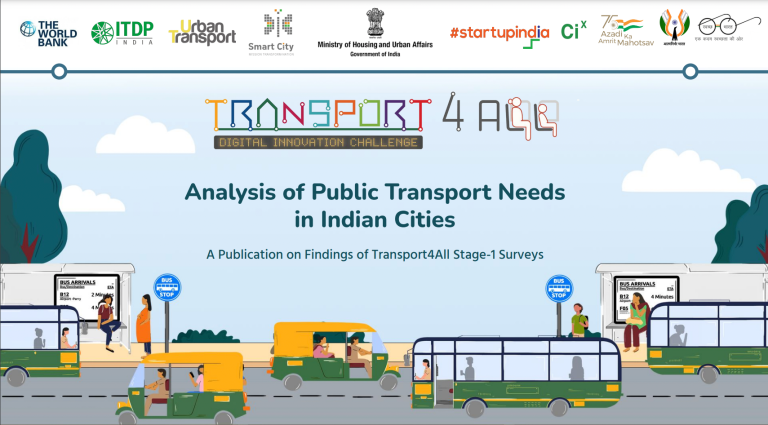
Looking forward to stage 2!
Launching in July’22, Stage 2 of Transport4All Challenge will connect cities and startups to innovate and create tech-based, digital solutions for the 10 curated problem statements to make formal and informal public transport safe, reliable, and convenient for all.
Startup innovations have immense potential, and we are eager to see how they positively contribute and impact the public transport sector.
Thank you for following our work in Stage 1, and stay tuned as we bring you more stories from Stage 2!
The Transport4All Challenge is a collaboration between Smart Cities Mission, Urban Transport MOHUA, World Bank, CiX, and Startup India, with ITDP India as the co-host and technical knowledge partner.
Recent Blogs
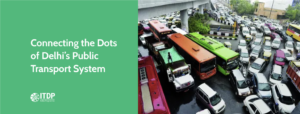
Connecting the Dots of Delhi’s Public Transport System
Find how the intricate network of Delhi’s public transport system and its ongoing efforts enhance connectivity, improve accessibility, and provide a seamless travel experience for millions of commuters in the bustling metropolis.”
Pune, Coimbatore and Chennai Selected as India’s ‘Smart Cities’
Pune, Coimbatore, and Chennai emerge as India’s Smart Cities, paving the way for sustainable urban development and innovative solutions. Explore their strategies and initiatives towards building smart and livable cities for the future.
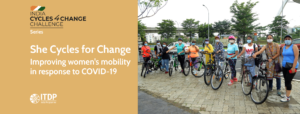
She Cycles for Change
Join us on a journey with inspiring women who are cycling for change. Discover their stories of empowerment, resilience, and how they are transforming cities by advocating for cycling as a sustainable mode of transport.
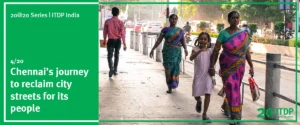
Chennai’s journey to reclaim city streets for its people
Chennai’s remarkable journey towards reclaiming city streets for its people. Uncover the inspiring initiatives and transformative efforts that are reshaping the urban landscape and prioritizing people-centered mobility.
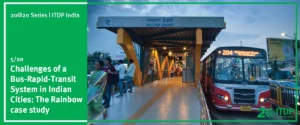
Challenges of a Bus-Rapid-Transit System in Indian Cities: The Rainbow case study
Learn from the Rainbow case study to understand the key considerations and solutions for building efficient and sustainable urban transportation systems.
